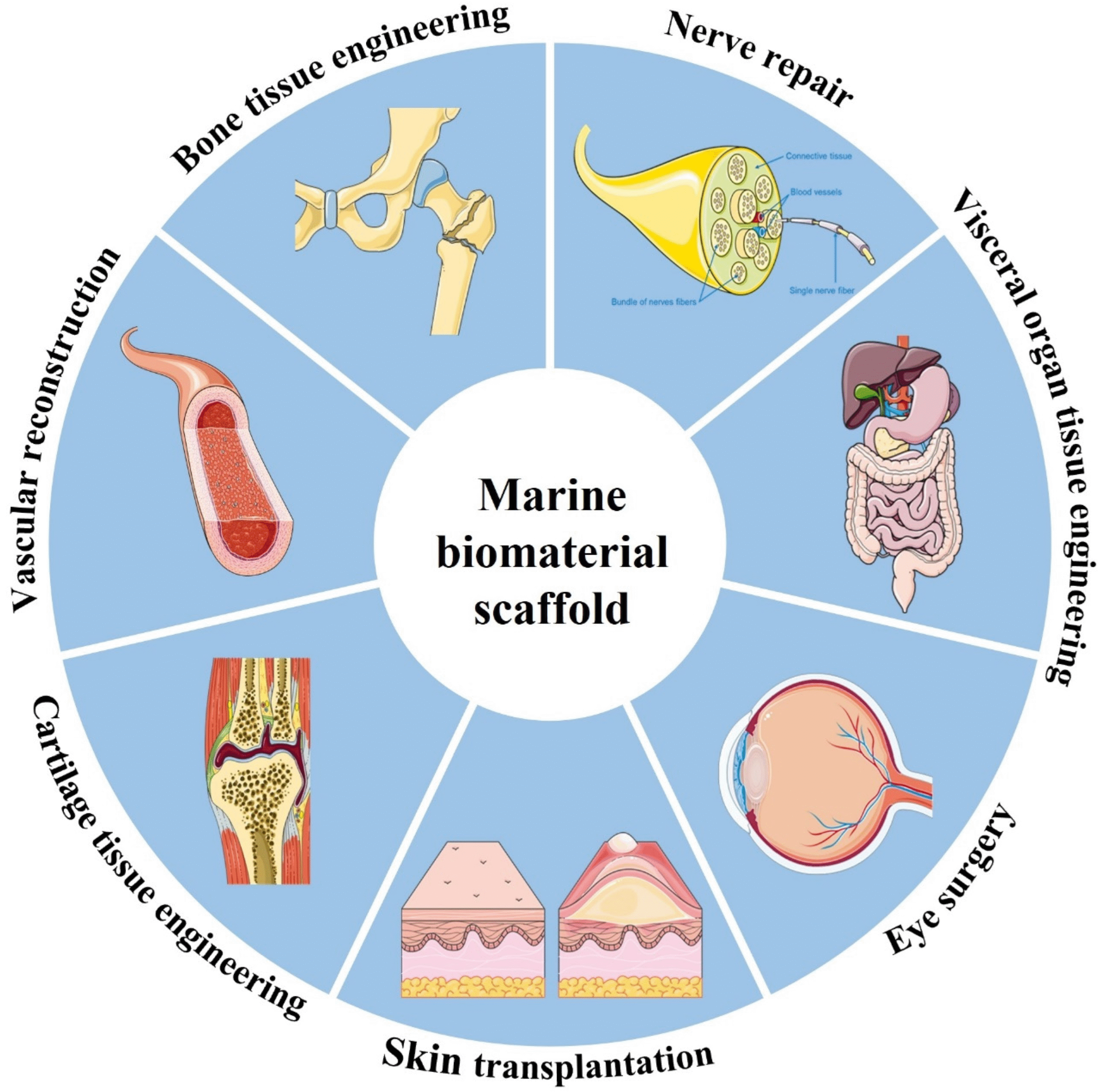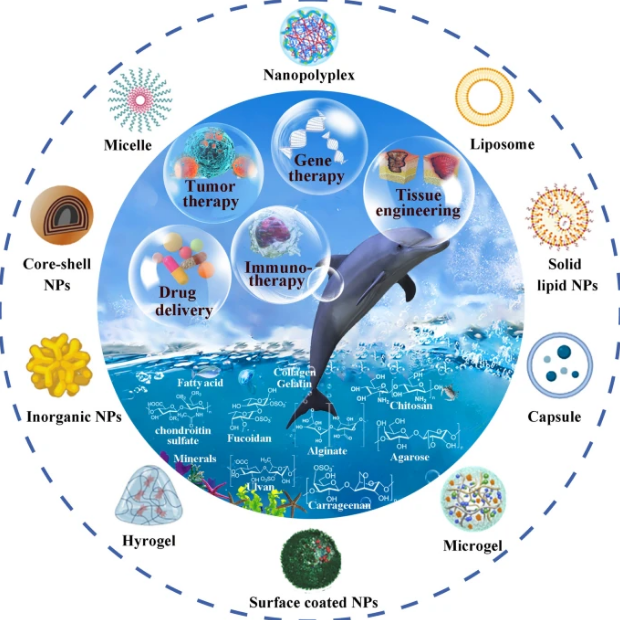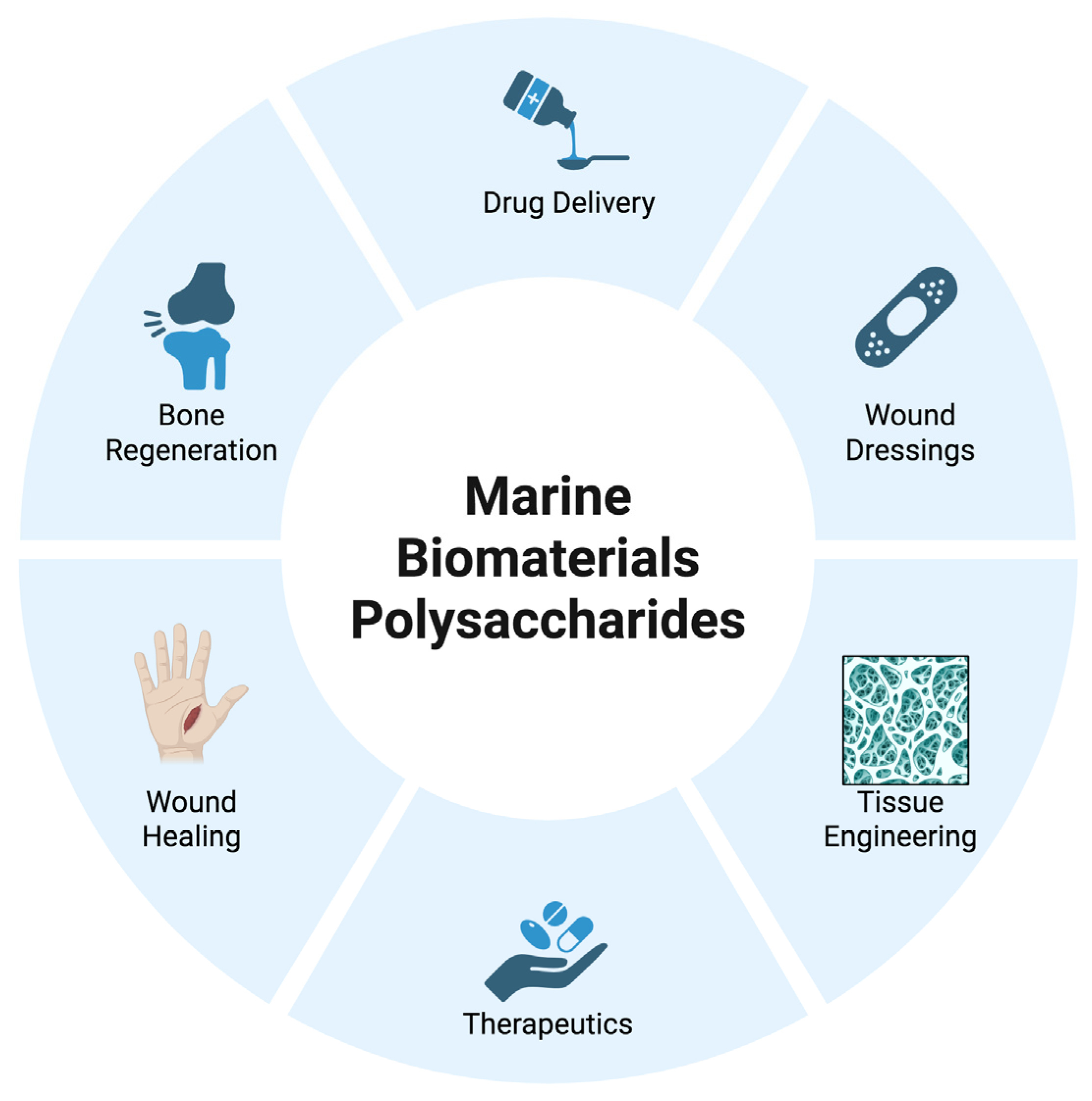Understanding Biomaterials and the Emerging Role of Marine-Derived Materials in Modern Biomedicine
Author: Rozhan Vista Mehr Ltd. | Category: Research | Date Published: October 2025
Abstract
Biomaterials represent one of the most transformative innovations in modern biomedicine, offering solutions that merge biology and engineering. This white paper explores the foundation, classification, and growing significance of marine-derived biomaterials as sustainable, functional, and biocompatible alternatives for applications in tissue engineering, regenerative medicine, and wound healing. A brief outlook on biopolymers is also provided, establishing the connection between natural materials and the next generation of biofunctional innovations.
1. Introduction: What Are Biomaterials?
Biomaterials are natural or synthetic substances designed to interact with biological systems for therapeutic or diagnostic purposes. Their development has revolutionized medical treatments, from prosthetics and implants to drug delivery systems and tissue engineering scaffolds. A biomaterial must be biocompatible, non-toxic, and capable of integrating with or supporting living tissues. The term encompasses a wide range of materials—including polymers, metals, ceramics, and composites—that bridge the gap between biology and material science.

Figure 1: Characteristics of Marine Biomaterials and Their Applications in Biomedicine
Figure 1. Overview of the diverse applications of marine-derived biomaterials in biomedicine, including wound healing, tissue regeneration, and drug delivery. Adapted from Zhang et al., “Characteristics of Marine Biomaterials and Their Applications in Biomedicine,” Marine Drugs, 2022, 20(6):372. Licensed under CC BY 4.0.
2. Classification of Biomaterials Based on Origin
Biomaterials can be classified in various ways, including their composition, functionality, and biological source. A particularly important distinction is based on their origin, which divides them into synthetic and natural categories.
2.1 Synthetic Biomaterials
Synthetic biomaterials, such as medical-grade polymers (e.g., polyethylene, PLA, PCL), ceramics, and metals, are widely used due to their mechanical strength, controlled degradation rates, and reproducibility. However, synthetic materials may lack intrinsic biological signals required for optimal cell adhesion or regeneration.
2.2 Natural Biomaterials
Natural biomaterials are derived from biological sources—plants, animals, or marine organisms—and are valued for their inherent biocompatibility and bioactivity. Examples include collagen, chitosan, alginate, and silk fibroin. These materials often support better cell attachment and tissue integration but can present challenges in scalability and purity.

Figure 2: Marine Biomaterials in Biomedical Nano/Micro-Systems
Figure 2. Schematic illustration of marine biomaterials in nano/micro biomedical systems, highlighting their use in drug delivery, biosensing, and regenerative applications. Adapted from Wang et al., “Marine Biomaterials in Biomedical Nano/Micro-Systems,” Journal of Nanobiotechnology, 2023, 21:112. Licensed under CC BY 4.0.
3. Marine Biomaterials: A Sustainable and Functional Alternative
Marine biomaterials have emerged as a sustainable and ethically favorable alternative to traditional terrestrial sources. Derived from fish, algae, crustaceans, and other marine life, these materials combine biocompatibility with environmental responsibility. Marine collagen, chitosan, alginate, and fucoidan are among the most researched compounds due to their unique biochemical and mechanical characteristics.
Marine collagen, for instance, demonstrates lower immunogenicity and superior solubility compared to mammalian collagen. Its triple-helical structure and rich amino acid profile promote tissue regeneration and wound healing. Products such as MariXBioHeal™, developed by RVM BioTech, utilize native marine Type I collagen to maintain the natural structure and enhance biofunctionality in medical and research applications.
Beyond collagen, other marine biomaterials offer diverse advantages: chitosan from crustacean shells exhibits antibacterial properties and is used in hemostatic dressings; alginate from seaweed provides hydrogel matrices for drug delivery; and fucoidan contributes antioxidant and anti-inflammatory functions. Together, these compounds illustrate the vast potential of ocean-sourced materials in advancing regenerative medicine.
4. Biomedical and Research Applications
Marine biomaterials are widely applied in regenerative medicine, wound healing, tissue scaffolding, and controlled drug delivery systems. Their ability to mimic the extracellular matrix and provide bioactive cues makes them ideal candidates for constructing complex biological environments. Recent studies have shown the potential of marine-derived collagen and polysaccharides in promoting angiogenesis, accelerating epithelialization, and improving biocompatibility in implantable devices. In research contexts, these biomaterials serve as reliable substrates for in vitro cell culture, 3D bioprinting, and biosensor development. Their naturally derived and renewable nature also aligns with global movements toward sustainable and ethical biomedical manufacturing.

Figure 3: From Sea to Therapy: Marine Biomaterials for Drug Delivery and Wound Healing
Figure3. Schematic representation of marine biomaterials used in therapeutic systems for wound healing and targeted drug delivery. Adapted from Chen et al., “From Sea to Therapy: Marine Biomaterials for Drug Delivery and Wound Healing,” Pharmaceuticals, 2023, 18(8):1093. Licensed under CC BY 4.0.
5. Outlook: The Bridge Toward Biopolymers
The evolution of biomaterials is closely intertwined with the rise of biopolymers—macromolecules derived from biological sources that combine functionality with environmental sustainability. As the field advances, hybrid biomaterials integrating marine-derived components and biopolymers are anticipated to lead the next generation of regenerative therapies. This synergy between biological inspiration and polymer innovation marks a significant leap toward safer, smarter, and more sustainable biomedical solutions.
References and Suggested Readings
- Ratner, B. D. (2020). Biomaterials Science: An Introduction to Materials in Medicine. Academic Press.
- Ferreira, A. M., Gentile, P., Chiono, V., & Ciardelli, G. (2012). Collagen for bone tissue regeneration. Acta Biomaterialia, 8(9), 3191–3200.
- Kim, S. K., & Mendis, E. (2006). Bioactive compounds from marine processing by-products – A review. Food Research International, 39(4), 383–393.
- Silva, T. H., Alves, A., Popa, E. G., et al. (2014). Marine origin collagens and its potential applications. Marine Drugs, 12(12), 5881–5901.
- Kang, M. S., Jo, H. J., Jang, H. J., Kim, B., Jung, T. G., & Han, D.-W. (2023). Recent advances in marine biomaterials tailored and primed for the treatment of damaged soft tissues. Marine Drugs, 21(12), 611.
- RVM BioTech. (2025). MariXBioHeal™ Native Marine Collagen Platform. Available at: https://rozhanvistamehr.com/
